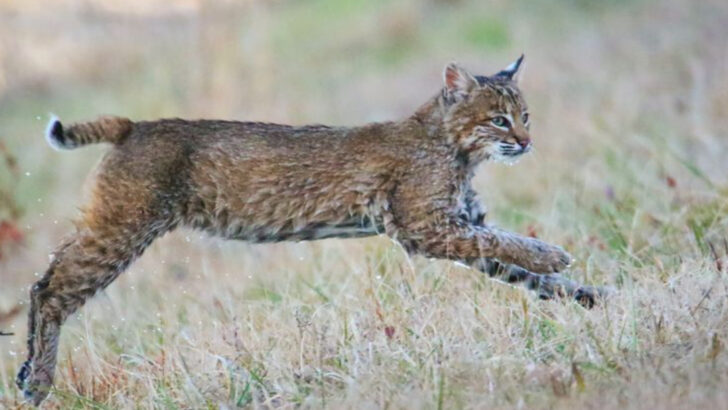Indiana’s wild side is a hidden treasure waiting to be discovered!
In a state known for rolling fields and friendly towns, nature quietly paints a masterpiece across forests, streams, and open skies. Every step off the beaten path invites you to a realm of surprises.
Imagine sneaking a peek at a playful raccoon under a twilight sky or catching sight of a sleek fox darting through the underbrush. A gentle deer might pause to watch you, while a bold bobcat lurks silently in the shadows. Each rustle and chirp tells a tale of wonder that redefines the familiar.
Ready to explore the unexpected? Dive into this guide of 22 remarkable animals calling Indiana home. Let your curiosity lead you to encounters that transform ordinary moments into wild adventures.
Bald Eagle
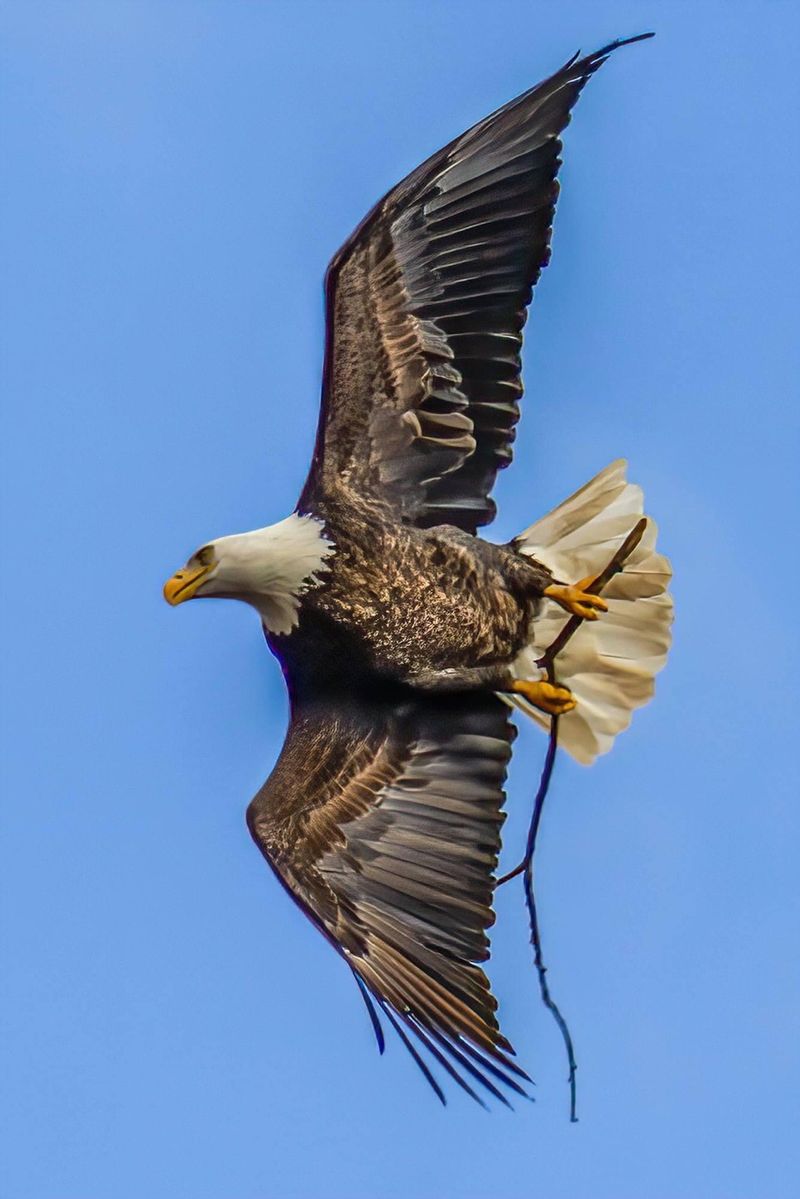
The bald eagle, a symbol of strength and freedom, can be seen soaring above Indiana’s lakes and rivers. These birds are particularly active during early morning hours. Spotting one requires patience and a keen eye for movement.
Look for them perched on tall trees near water bodies, scanning the area for fish. In winter, they are more plentiful as they migrate south.
Their nests, usually high atop trees, can be gigantic. Watching a bald eagle in flight is a breathtaking experience, one that connects you to nature’s grandeur.
White-tailed Deer
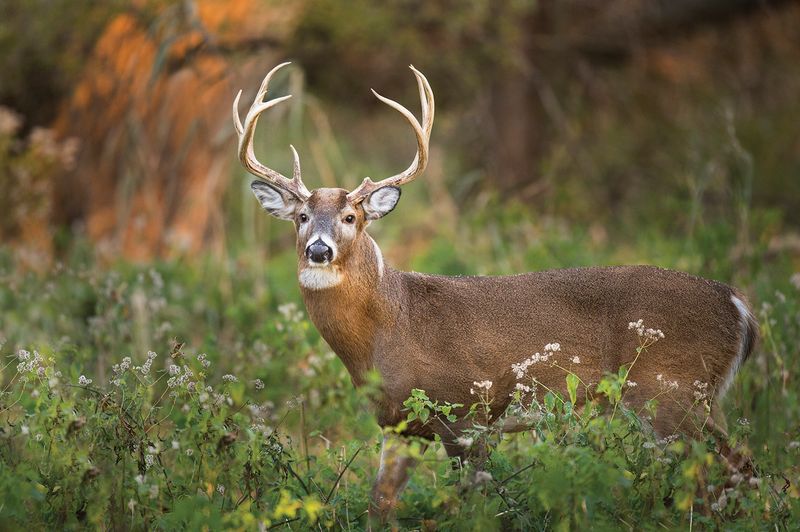
White-tailed deer are a common sight in Indiana’s forests and fields. They are most active during dawn and dusk, when they forage for food.
These elegant creatures are known for their distinctive white tails, which they flash as a warning to others. Their keen senses help them evade predators.
Spotting a deer requires moving quietly and staying downwind. Observing a family of deer grazing is a serene experience, offering a glimpse into the peaceful rhythm of nature.
Indiana Bat
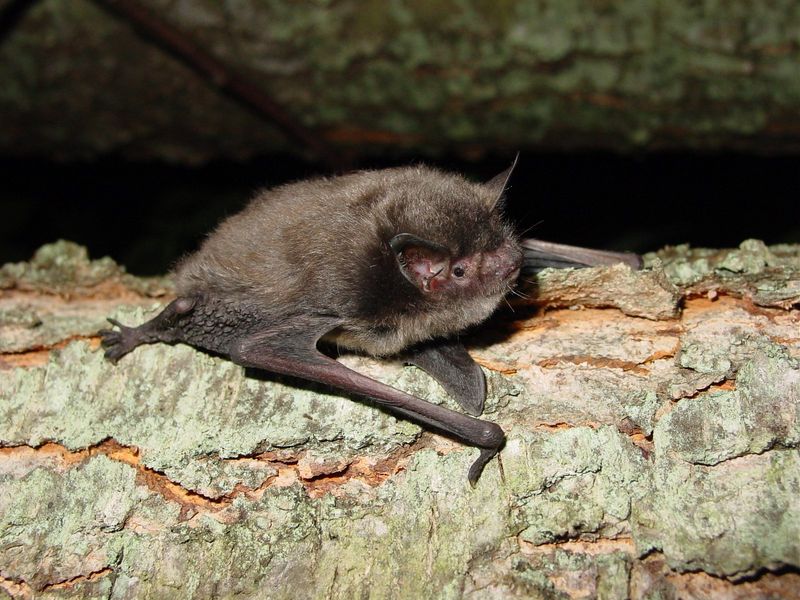
The Indiana bat, a tiny creature, finds sanctuary in the state’s caves and wooded areas. These bats are nocturnal, emerging at dusk to feed on insects.
During the day, they roost in clusters, hanging from cave ceilings or under tree bark. Conservation efforts are crucial, as their population is threatened by habitat loss and disease.
Spotting an Indiana bat requires visiting protected areas and using minimal light. Observing their agile flight is a marvel, showcasing nature’s adaptability.
Eastern Box Turtle
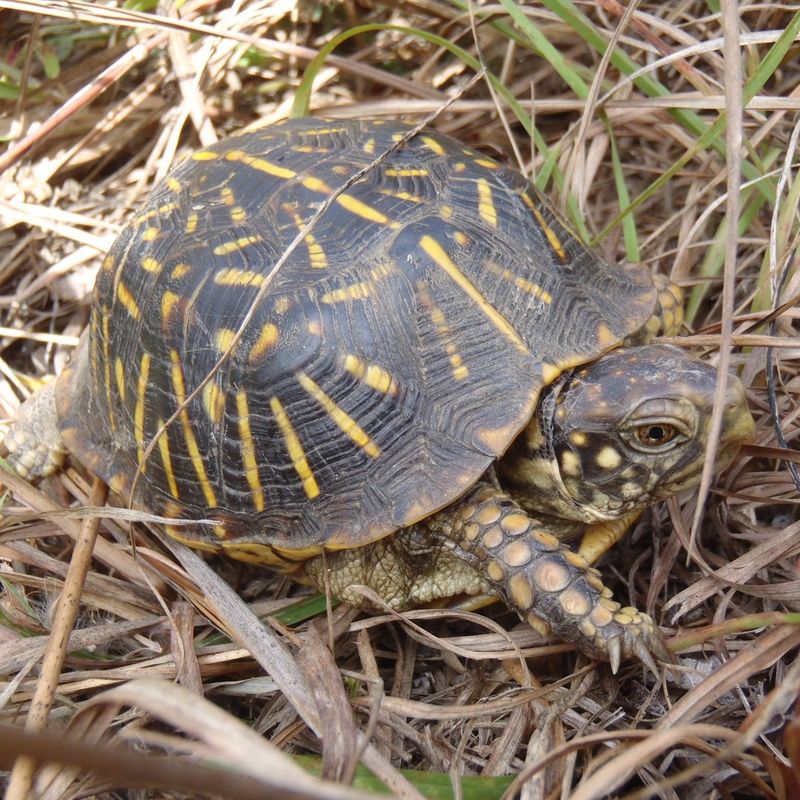
Eastern box turtles are a terrestrial species, often found in moist forests and meadows across Indiana. They are recognizable by their domed shells and vibrant markings.
These turtles are most active after rains, when the ground is soft. They are slow movers, taking their time to explore their environment.
To spot one, search the forest floor carefully, especially near water. Watching an eastern box turtle roam reveals nature’s patient pace, creating a moment of tranquility.
Red Fox
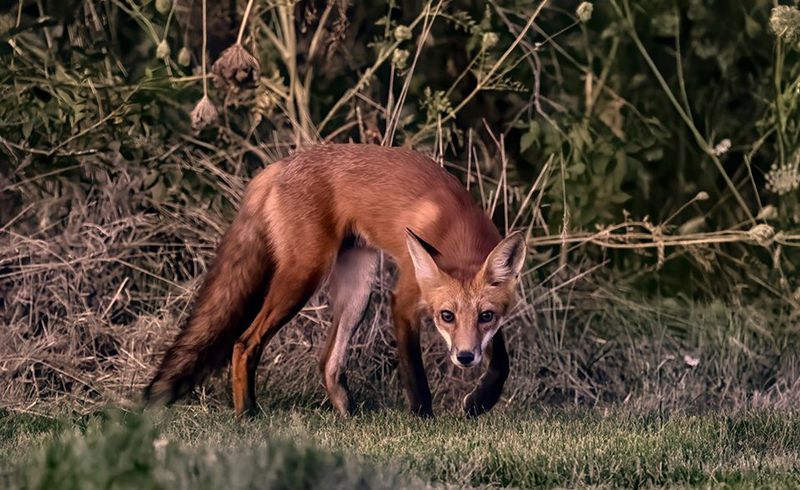
The red fox, with its striking orange-red coat and bushy tail, thrives in Indiana’s diverse habitats. They are adaptable creatures, often seen in fields, forests, and even urban areas.
Active primarily at dawn and dusk, red foxes hunt small mammals and birds. Their keen sense of hearing aids in locating prey.
Spotting a red fox requires sharp observation and silence. Watching one on the hunt is thrilling, offering a window into the cunning and agility of these beautiful animals.
Great Blue Heron
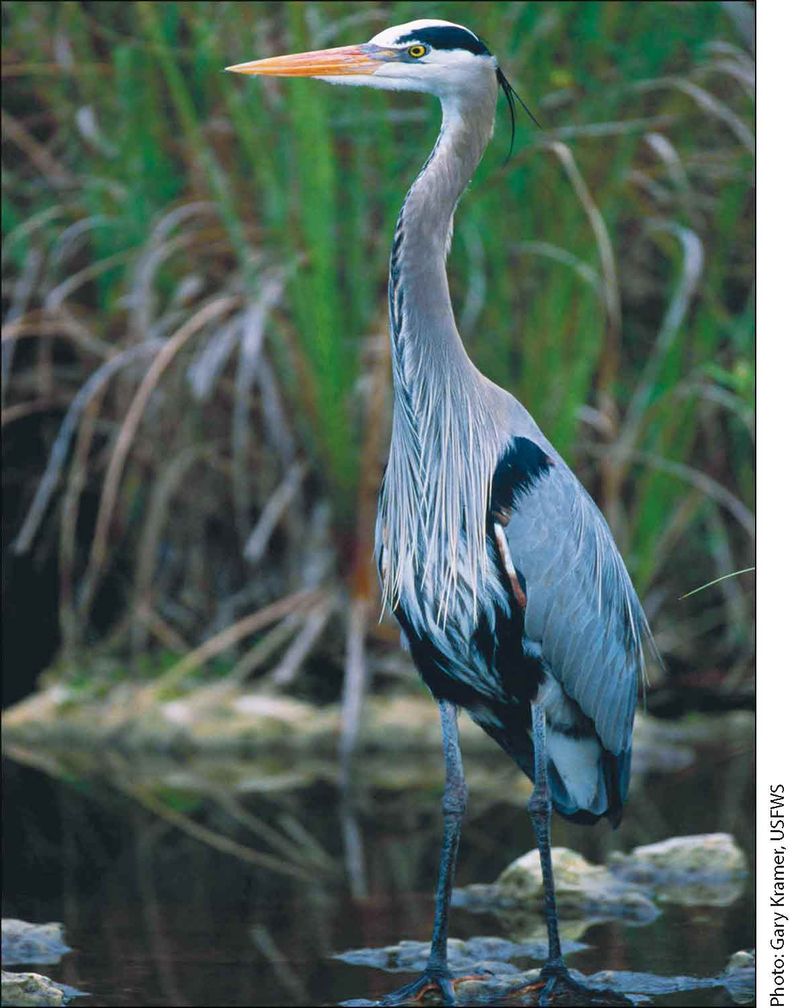
Great blue herons are elegant waders found near Indiana’s lakes and rivers. Their long legs and necks make them expert fishers.
These birds are solitary hunters, often seen standing motionless in water. Their patience is admirable, as they wait for the perfect moment to strike.
To observe one, visit quiet water bodies early in the morning. Watching a heron catch its meal is a testament to nature’s precision, a moment of grace and skill.
Barred Owl
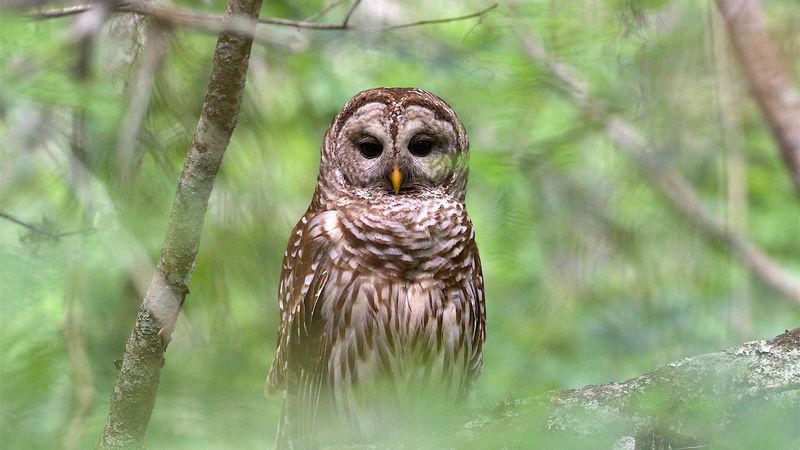
Barred owls, with their haunting calls and striped feathers, inhabit Indiana’s wooded areas. These nocturnal birds are most active at night, when their hoots resonate through the forest.
Owls have incredible night vision and silent flight, making them effective hunters. They prey on small mammals and birds.
Spotting a barred owl requires patience and listening for their calls. Observing one in the wild is a captivating experience, highlighting the mystery and allure of the night.
River Otter
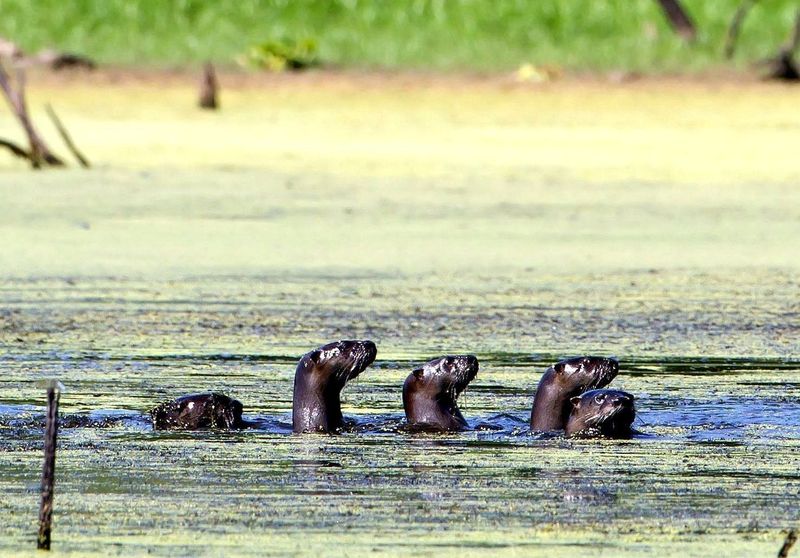
River otters, known for their playful nature, inhabit Indiana’s waterways. They are skilled swimmers, often seen frolicking in rivers and streams.
Otters are social animals, living in family groups. They feed on fish and other aquatic creatures.
To spot one, look for signs of their activity near water, such as slides and tracks. Watching otters play is delightful, offering a glimpse into their lively and social world.
American Toad
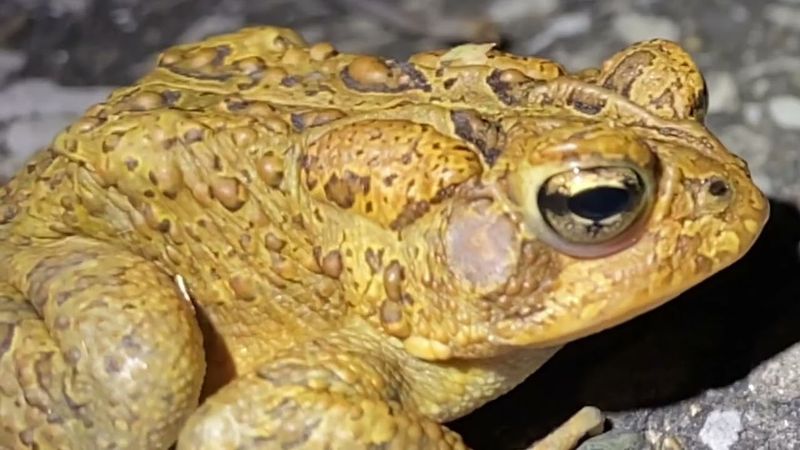
The American toad is a common amphibian found throughout Indiana. These toads prefer moist environments, like forests and gardens, where they hunt insects.
Their bumpy skin and distinct call make them easy to identify. Toads are active mostly during the night.
To find one, search the forest floor after rains. Observing an American toad hopping through leaves provides an intimate view into the hidden life of the forest floor.
Praying Mantis
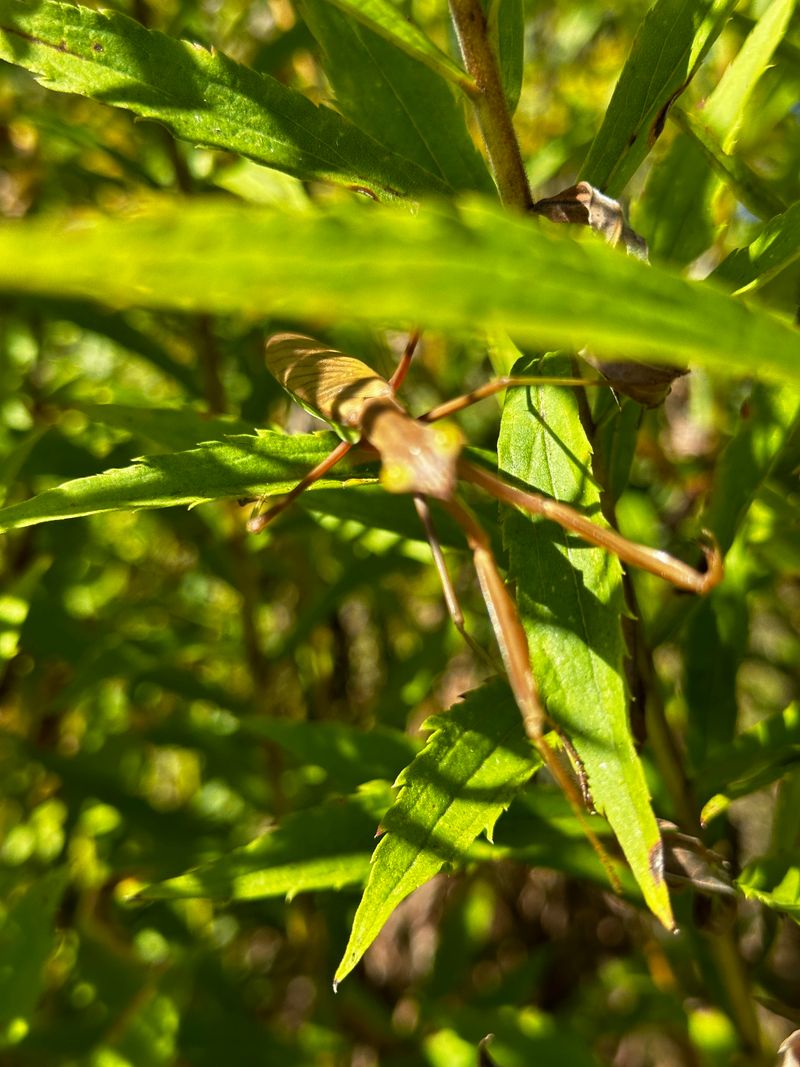
The praying mantis, with its distinctive folded forelegs, is a fascinating insect in Indiana. These predators are skilled hunters, camouflaging among plants.
Mantises are solitary, often found in gardens and fields. They feed on insects, playing a vital role in pest control.
Spotting one requires a sharp eye for detail. Watching a praying mantis catch its prey offers insight into the precision and patience of these remarkable insects.
Eastern Chipmunk
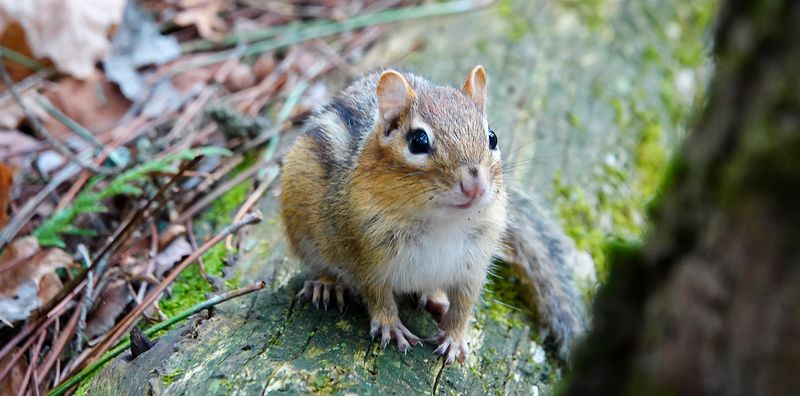
Eastern chipmunks, with their striped backs and cheek pouches, are a common sight in Indiana’s woodlands and gardens. These small rodents are active during the day.
Chipmunks are known for their energetic foraging, gathering food to store for winter. They are often seen darting between trees and rocks.
To observe one, sit quietly and watch for movement among the underbrush. Witnessing a chipmunk’s busy routine is charming, offering a peek into nature’s industrious side.
Coyote
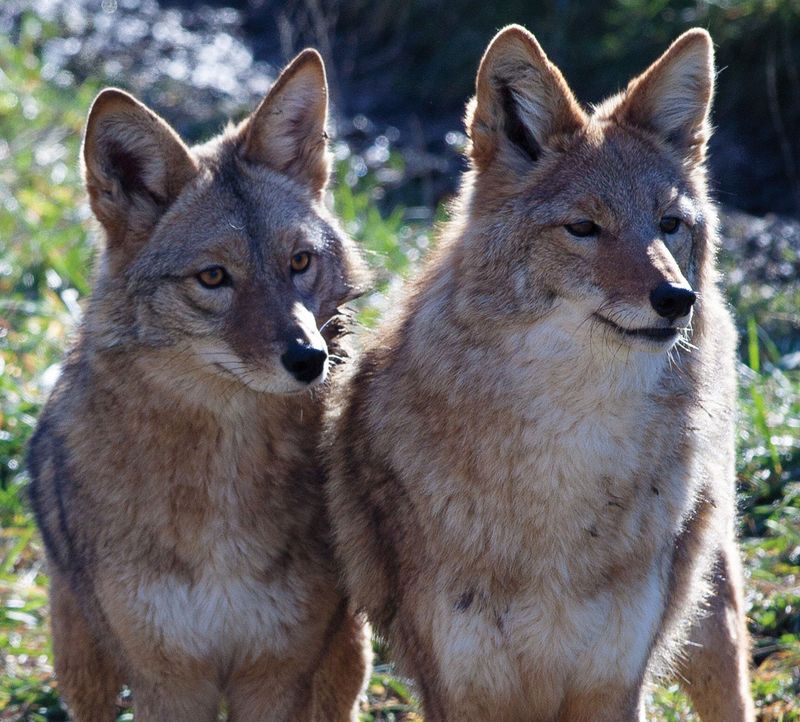
Coyotes, adaptable and resilient, roam across Indiana’s landscapes. These canids are most active at night, when their howls often echo through the countryside.
Coyotes are opportunistic feeders, preying on small mammals and occasionally scavenging. Their keen senses make them effective hunters.
Spotting a coyote requires stealth and an understanding of their habits. Observing one in the wild is thrilling, illuminating the complex dynamics of nature’s food web.
Northern Cardinal
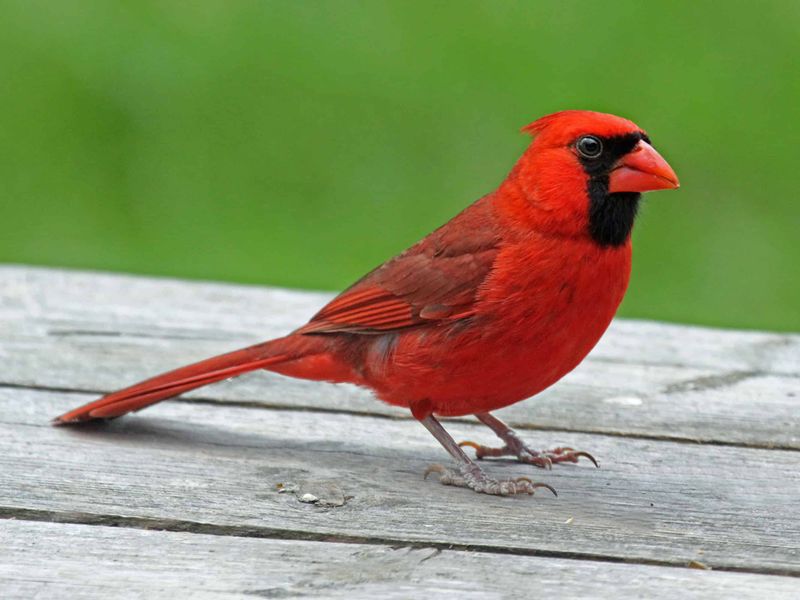
The northern cardinal, with its striking red plumage, is a beloved bird in Indiana. These birds are non-migratory, seen year-round in gardens and forests.
Cardinals are often spotted in pairs or small groups. Their melodious songs are a familiar sound, especially during morning hours.
To attract them, offer seeds and a quiet spot to perch. Watching a cardinal in your backyard adds a splash of color and a touch of joy to any day.
American Beaver
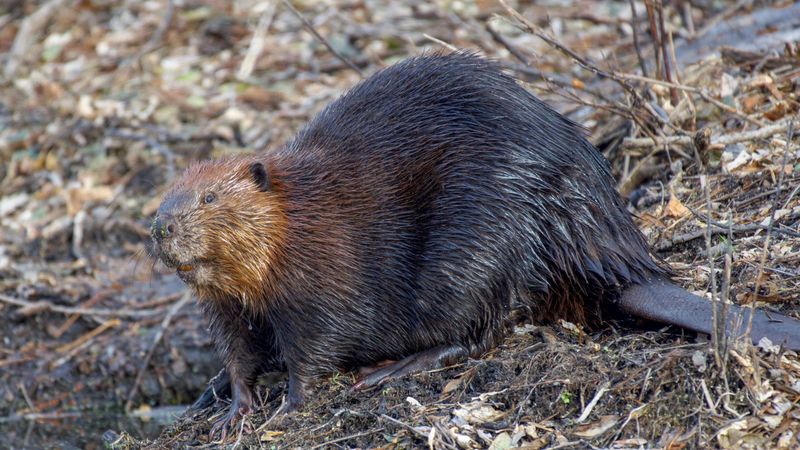
American beavers, nature’s architects, are found in Indiana’s waterways. These industrious animals are known for building dams and lodges using sticks and mud.
Beavers are most active at dusk and night. Their engineering skills create habitats for other species, showcasing nature’s interconnectedness.
To spot one, visit streams with signs of beaver activity, like gnawed trees. Observing a beaver at work reveals the wonders of nature’s engineering marvels, an unforgettable sight.
Monarch Butterfly
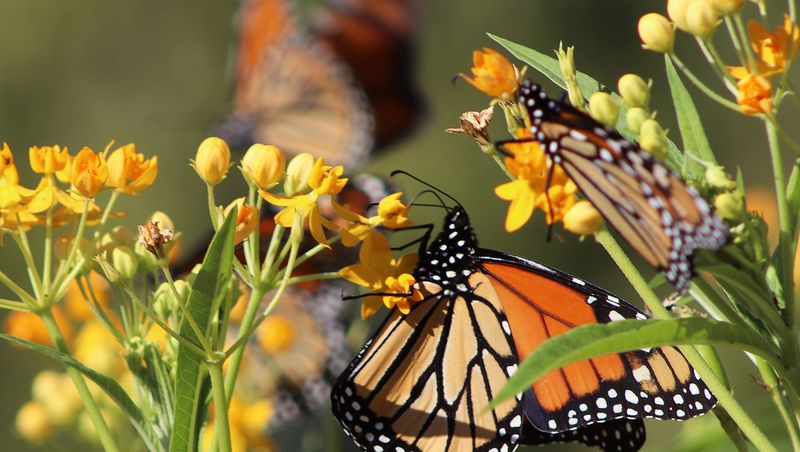
The monarch butterfly, a symbol of transformation, migrates through Indiana each year. These butterflies are unmistakable with their orange and black wings.
Monarchs rely on milkweed plants for reproduction, laying eggs on the leaves. Their migration is a marvel of endurance and navigation.
To see them, visit meadows with abundant flowers. Watching a monarch flutter by evokes the beauty and fragility of nature’s cycles, a truly inspiring moment.
Raccoon
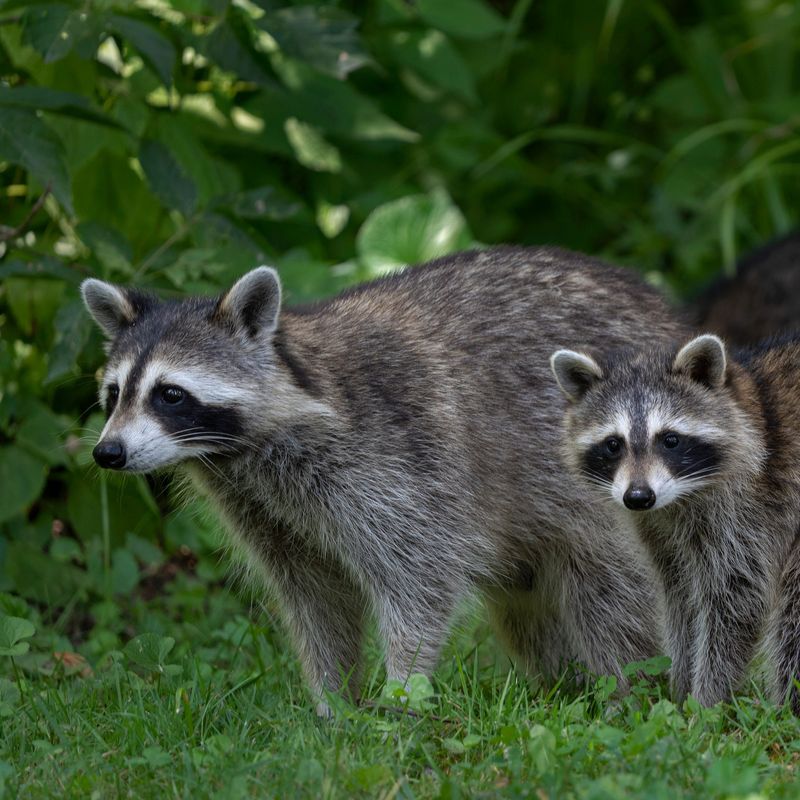
Raccoons, with their distinctive masked faces, are common in Indiana’s forests and urban areas. These nocturnal animals are known for their intelligence and adaptability.
Raccoons are opportunistic feeders, often scavenging for food. Their dexterous paws make them skilled foragers.
To spot one, look for them near water or food sources at night. Observing a raccoon in action is entertaining, showcasing the cleverness and resourcefulness of these adaptable creatures.
Peregrine Falcon
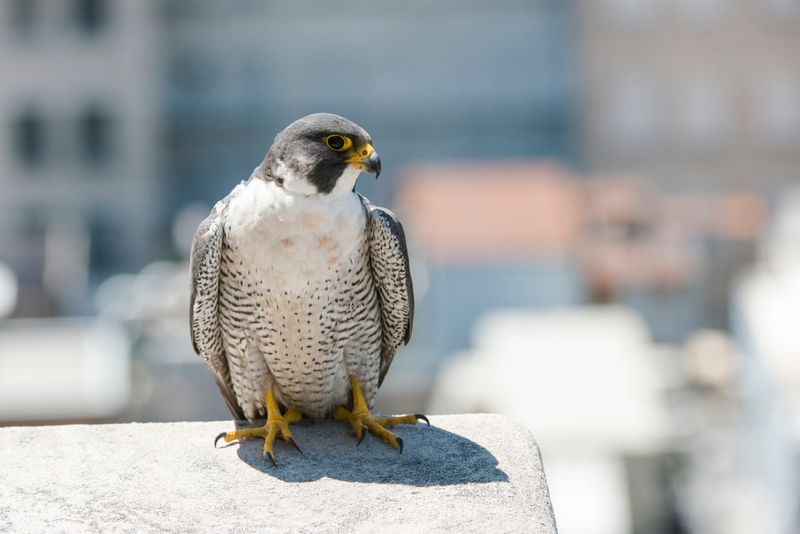
Peregrine falcons, renowned for their speed, are found nesting on Indiana’s tall structures. These birds of prey are masters of the skies, capable of soaring at incredible speeds.
Remarkably, they’ve adapted to urban environments, using skyscrapers as nests. They hunt birds in mid-air, showcasing extraordinary agility.
Spotting a peregrine falcon requires looking up in city areas. Observing their flight is awe-inspiring, offering a glimpse into the power and grace of these aerial hunters.
Snapping Turtle
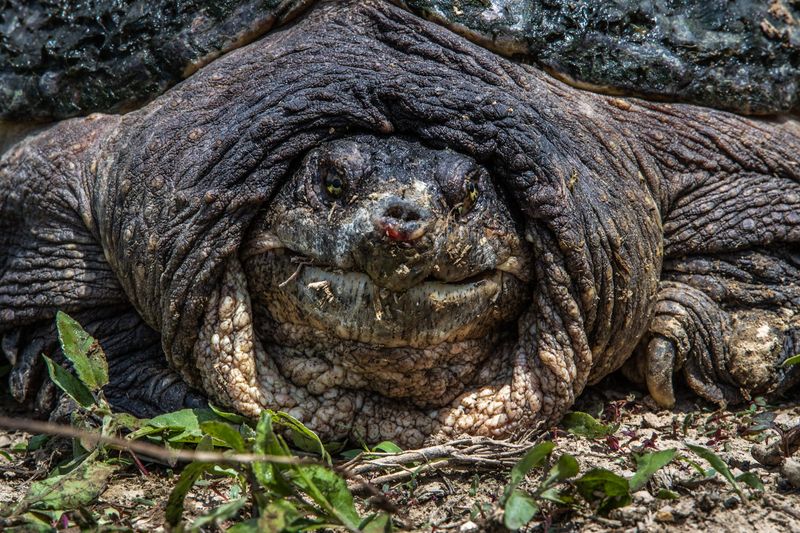
Snapping turtles, with their rugged appearance, inhabit Indiana’s ponds and wetlands. These ancient reptiles are known for their powerful jaws.
Though primarily aquatic, they often bask on logs and sun-warmed rocks. Snapping turtles are patient hunters, lurking for prey underwater.
To find one, explore wetlands with slow-moving water. Observing a snapping turtle highlights nature’s enduring resilience, a testament to adaptation through the ages.
White-footed Mouse
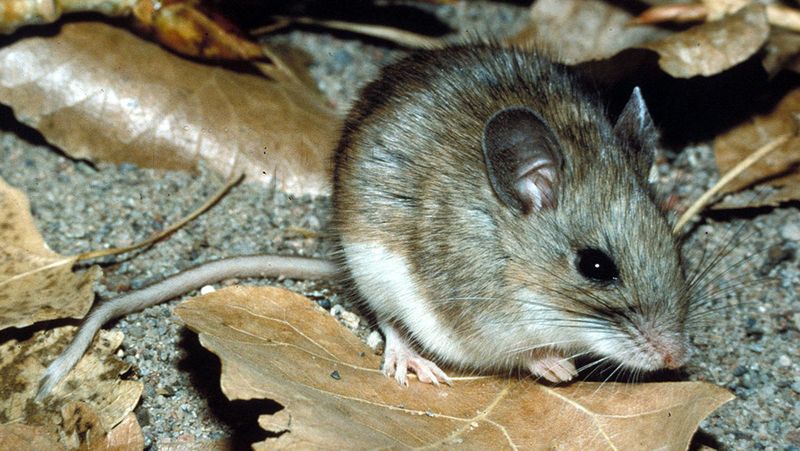
The white-footed mouse is a small, nocturnal rodent found in Indiana’s forests and fields. These mice are known for their agility and keen senses.
They build nests in tree cavities or under logs, storing seeds and nuts for winter. Their presence is vital for seed dispersion.
Spotting one requires being quiet and attentive. Watching a white-footed mouse scurry through leaves is a glimpse into the hidden network of life on the forest floor.
Eastern Garter Snake
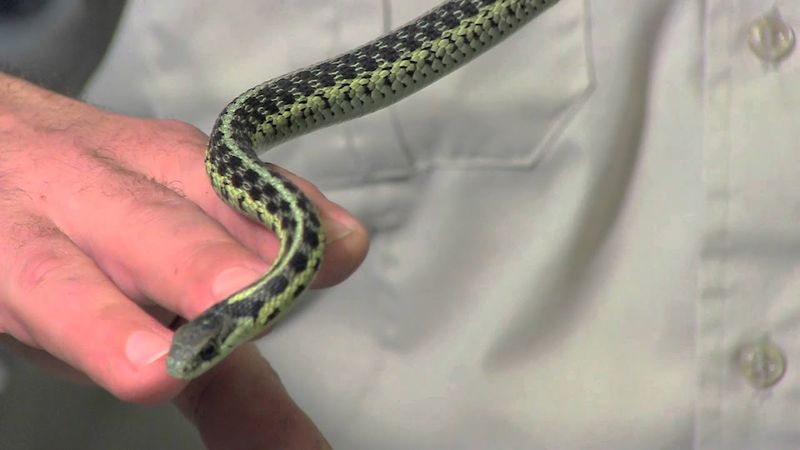
Eastern garter snakes, harmless and widespread, are often seen in Indiana’s gardens and meadows. These reptiles are active during the day.
They feed on small animals and play a crucial role in controlling pest populations. Garter snakes are known for their distinctive striped patterns.
To observe one, search sunny spots in gardens or fields. Watching a garter snake move silently through grass is an encounter with the subtle wonders of the natural world.
Bobcat
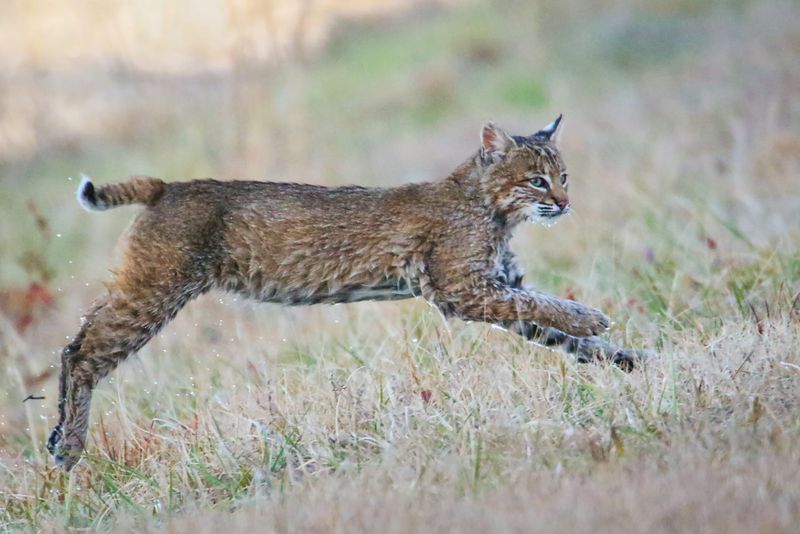
Bobcats are elusive predators found in Indiana’s remote forests. These solitary cats have keen senses and a distinctive short tail.
Bobcats hunt small mammals and birds, using stealth and agility. Their tracks are often the only sign of their presence.
Spotting a bobcat requires patience and luck. Observing one in the wild is a rare and thrilling experience, offering a fleeting glimpse into the life of a skilled hunter.
Fairy Armadillo
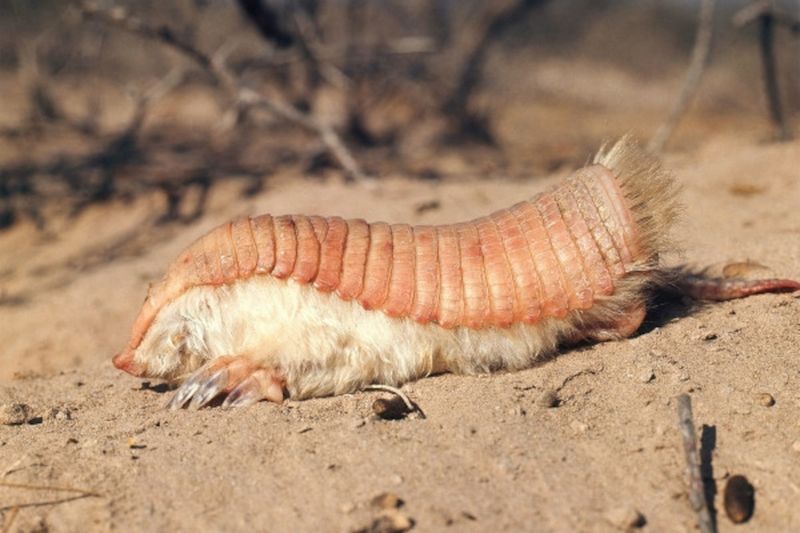
Though typically found in the grasslands of central Argentina, the elusive fairy armadillo is one of the more unexpected creatures rumored to be seen in Indiana. Known for its distinctive pink, armor-like shell, the armadillo uses its powerful claws to burrow quickly into the ground, becoming almost invisible to the untrained eye.
This tiny, nocturnal mammal is rarely seen, even in its native habitat, making a sighting in Indiana a truly rare event. For those patient and keen enough to wander through Indiana’s quiet woodlands at dusk, the chance encounter with this magical creature could be the highlight of a lifetime adventure. Nevertheless, keep your eyes peeled and your footsteps light!
Whether you’re a believer in the unbelievable or just enjoy the thrill of the hunt, the fairy armadillo adds a layer of wonder and mystery to Indiana’s wildlife lore, inspiring tales and curiosity among both locals and visitors alike. Its presence, though unverified, reminds us of the endless possibilities hidden within the natural world.

